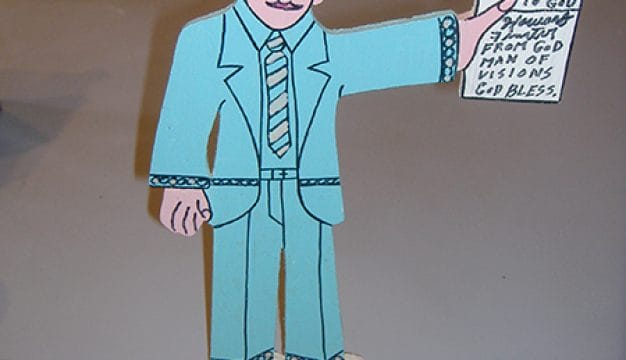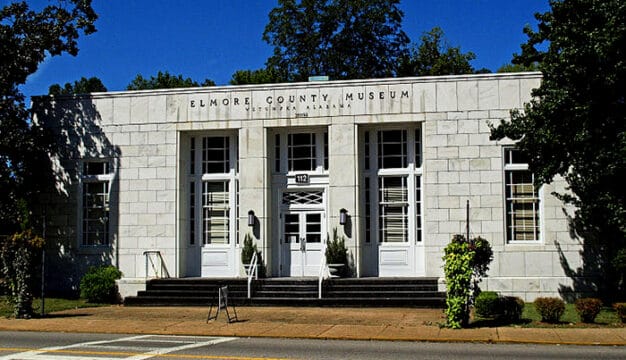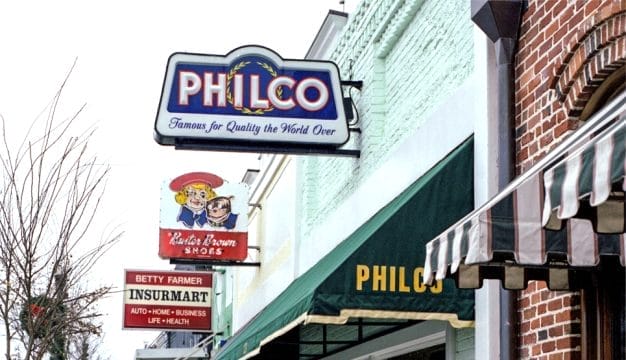William and Emily Hearin Mobile Carnival Museum
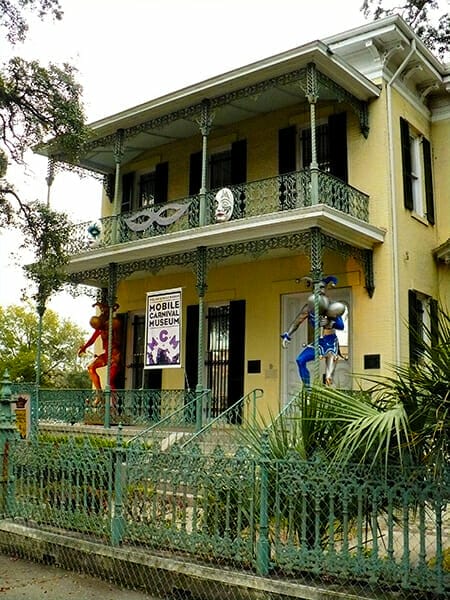 Mobile Carnival Museum
Established in 2005, the William and Emily Hearin Mobile Carnival Museum (MCM) chronicles the evolution of the annual Carnival celebration (better known as Mardi Gras) in the city of Mobile, Mobile County. Mobile’s Carnival has been celebrated annually since 1703, the year after Jean-Baptiste Le Moyne, Sieur de Bienville, a French Catholic, founded Mobile as the first capital of French Louisiana. It is the oldest such regular celebration in the United States that marks the beginning of the Lenten season for many Christian denominations.
Mobile Carnival Museum
Established in 2005, the William and Emily Hearin Mobile Carnival Museum (MCM) chronicles the evolution of the annual Carnival celebration (better known as Mardi Gras) in the city of Mobile, Mobile County. Mobile’s Carnival has been celebrated annually since 1703, the year after Jean-Baptiste Le Moyne, Sieur de Bienville, a French Catholic, founded Mobile as the first capital of French Louisiana. It is the oldest such regular celebration in the United States that marks the beginning of the Lenten season for many Christian denominations.
The museum was established by the Mobile Carnival Association (MCA), the governing body of festival planners that has organized the city’s Mardi Gras festivities since its founding in 1872. The MCM contains artifacts, pictures, video footage, and exhibits detailing the event’s rich history in 14 gallery rooms. The MCM is located inside the historic Bernstein-Bush House, a Creole cottage built in 1872. It served as the host site of the Museum of Mobile (now the History Museum of Mobile) until 1999, when it moved to its present location in the Old City Hall. Owned by festival leaders William and Emily Hearin, the historic home features magnificent chandeliers, crown molding, and pine flooring. The Hearins lease the building to the Mobile Carnival Association, which named the facility after the couple.
 Mardi Gras Queen Dress
The MCA planned and founded the museum and currently funds its maintenance and operation through admission fees, event rentals, and donations. At first, the MCA relied heavily on local community partners, however. Various historians, lawyers, architects, contractors, artists, businessmen and seamstresses volunteered their time to establish the museum. Carnival participants and their families donated the regalia, costumes, crowns, doubloons, and memorabilia that populate the museum. At present, volunteers contribute significantly to the operation of the MCM, acting as docents, gift shop and office workers, and coordinators of special weekend events. The MCA subsidizes the building’s rent, utilities, and curator’s salary, but the exhibits, artifacts, and much of the labor required to run the MCM are provided by community donors and volunteers.
Mardi Gras Queen Dress
The MCA planned and founded the museum and currently funds its maintenance and operation through admission fees, event rentals, and donations. At first, the MCA relied heavily on local community partners, however. Various historians, lawyers, architects, contractors, artists, businessmen and seamstresses volunteered their time to establish the museum. Carnival participants and their families donated the regalia, costumes, crowns, doubloons, and memorabilia that populate the museum. At present, volunteers contribute significantly to the operation of the MCM, acting as docents, gift shop and office workers, and coordinators of special weekend events. The MCA subsidizes the building’s rent, utilities, and curator’s salary, but the exhibits, artifacts, and much of the labor required to run the MCM are provided by community donors and volunteers.
The museum exhibits provide visitors an opportunity to view the history and cultural heritage of Carnival in Mobile. Mardi Gras artifacts, which fill most of the museum’s exhibits, include crowns, scepters, and robes worn by former Mardi Gras monarchs. The MCM also includes multiple video installations that enable guests to witness firsthand the pomp and pageantry of the festival. One room contains a photo gallery filled with pictures of participants, parades, and planners that date back to 1886. Framed art prints of the official posters of past Mardi Gras festivities adorn the walls of many of the rooms. A Mobile Mardi Gras timeline displayed in a hallway between galleries denotes important events and changes in the history of the festivities from 1703 to the present.
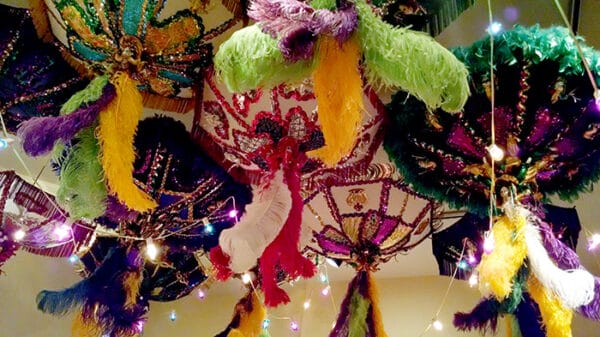 Mardi Gras Parasols
Exhibits dedicated to float construction and costume design demonstrate the time-consuming effort required to put on the festival every year, and sections of floats (such as the large dragon head in the main gallery) highlight the craftsmanship involved in creating these works of mobile public art. One exhibit room is dedicated to the history and regalia of African American Kings and Queens of Mardi Gras in Mobile, and another room is filled with the amusing and slightly profane posters that once adorned the floats of the Comic Cowboys, a krewe (organization of Carnival participants) known for its bawdy sense of humor.
Mardi Gras Parasols
Exhibits dedicated to float construction and costume design demonstrate the time-consuming effort required to put on the festival every year, and sections of floats (such as the large dragon head in the main gallery) highlight the craftsmanship involved in creating these works of mobile public art. One exhibit room is dedicated to the history and regalia of African American Kings and Queens of Mardi Gras in Mobile, and another room is filled with the amusing and slightly profane posters that once adorned the floats of the Comic Cowboys, a krewe (organization of Carnival participants) known for its bawdy sense of humor.
The second floor includes an exhibit dedicated to the music of Mardi Gras. It showcases a shrine to Bob Schultz, a jazz clarinet and saxophone player who was a fixture at the Mobile Mardi Gras for more than 30 years. The music room displays instruments, photo murals of jazz bands, and portraits of some of the more prominent musicians associated with the festival. Ballroom gowns, monarchical robes, and jester costumes highlight the skilled handiwork of local seamstresses and tailors.
The MCM also includes interactive exhibits designed to enhance guest experiences. A small theater shows films of the highlights of previous parades. The “Little Mystics Den” enables children to dress up in miniature costumes and imagine participating in the festival. A rocking, full-sized float representing a floral garden and a night sky is the centerpiece exhibit in one gallery, and visitors are encouraged to mount it for a “behind the mask” view of a Mardi Gras street party. The MCM is available to rent for private parties and events and is located at 355 Government Street.
Further Reading
- Hearin, Emily Staples.. Let the Good Times Roll!: Mobile, Mother of Mystics. Mobile, Ala.: E. S. Hearin & W. B. Taylor, 1991.
- ———. Queens of Mobile Mari Gras, 1883-1986. Mobile, Ala.: Museum of the City of Mobile, 1986.
